From Bud to Bowl: How to Grow and Harvest Dragon Fruit (Pitaya), with Gentle, Reader-Friendly Flow

Edited By FileCollage
Hello steemians,
Dragon fruit, also known as pitaya, is a one-of-a-kind tropical fruit known equally for its gorgeous appearance, refreshing taste, and a wide range of health benefits. It comes from a cactus-like plant and matures in an interesting way before it can be eaten. In this article, I’ll take you through the story of dragon fruit, from its first blossoms to its harvest and consumption.
Its allure begins well before you slice your first dragon fruit from the sweet, tender flesh packed inside, because this boldly skinned treasure comes from a climbing cactus that adores a warm, sunny spot and thanks careful handling with blooms that open for a single, miraculous night. So, if you’re aiming to grow a harvest that tastes as good as it looks, you’ll want to give the plant an open, sunny position where air circulates freely, a sturdy trellis or T-post to clamber over, well-drained, slightly acid to neutral soil that never stays waterlogged, and watering that’s deep yet spaced far enough apart to let the root zone air out, since wet roots, dry spells, or heavy doses of nitrogen at the wrong time can persuade the plant to devote its energy to sprawling instead of blooming and bearing fruit. With that as background, you’re prepared to experience the pitaya’s somewhat private, dramatic arc, from early hints of floral intent to the instant your hand encounters an all-colored, barely yielding fruit.
| Bud Formation: |
|---|
Progress to the first stage with budding occurring on the cactus body. There are two types of buds: the vegetative ones which help the plant grow up and strong, and the flowering buds that will become the flowers which can produce fruit. It is important as it determines the base for fruit creation.
 | 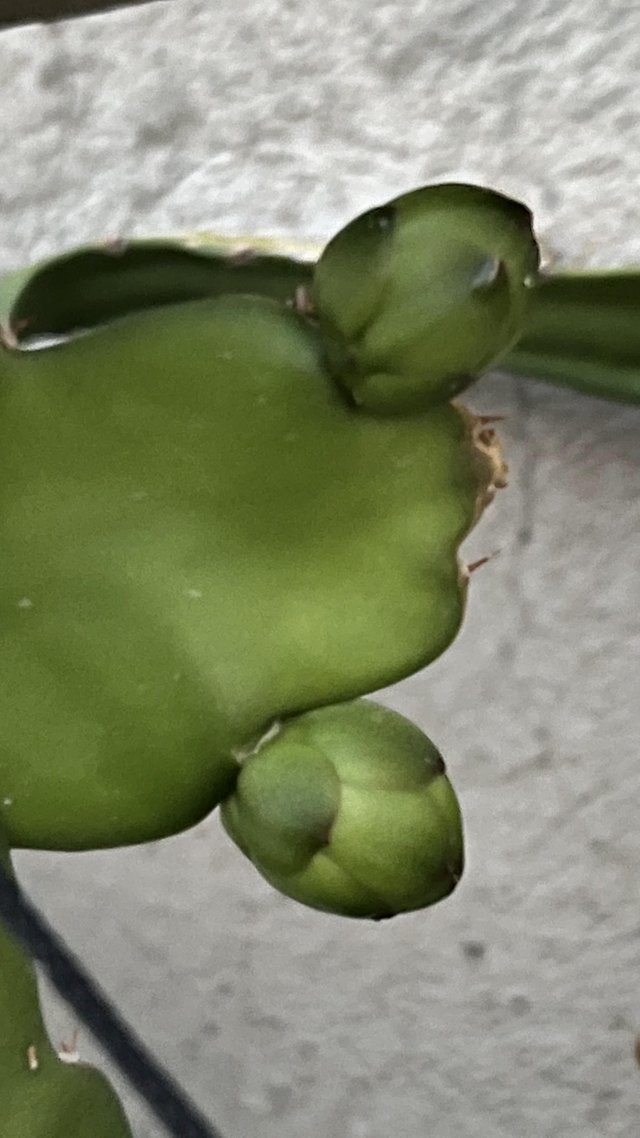 | 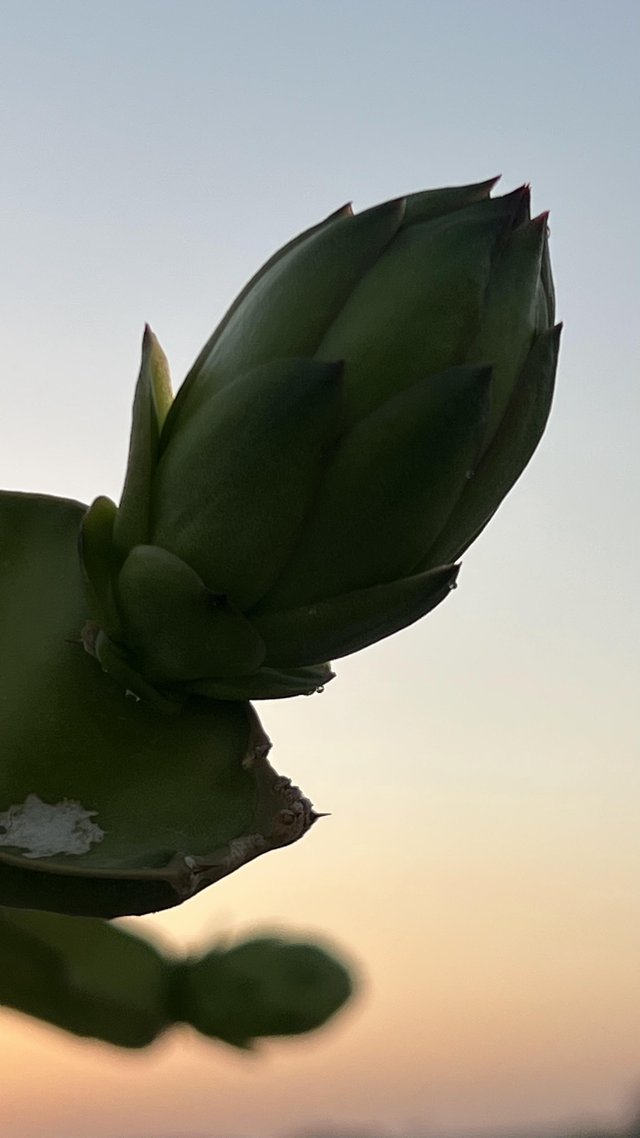 |
|---|
Early in the season, when the light is abundant and when the canopy is combed high and fine enough so that the sun can ease a caress upon those areoles along those little triangular cladodes, you notice tiny pimples that betoken the vine’s choice between making more architecture and pursuing reproduction, each of which matters vastly to the health of the vine, but wherein the grower who does want the fruit leans slightly in the direction of floral destiny by keeping the architecture somewhat looser, by curling long shoots to and fro across the top of the structure so that their arched configuration stimulates a tendency to bloom and by doing something sensible to back off on nitrogen in favor of a balanced feed that nudges latent floral buds to whatever next station in life is down the line for them rather than fumbling around stage-canto in some leafy hyperambition, which is why this time, in spite of how it looks to the layman’s eye, is the pivot by which the whole crop turns.
| Bud Development to Flower: |
|---|
[As the plant grows,] flowering buds evolve to flower structures that start to close. The buds are still developing at this stage, ripening to the point where they open up into a stunning burst of color. The change from bud to flower signals the initiation of the fruiting cycle.
 | 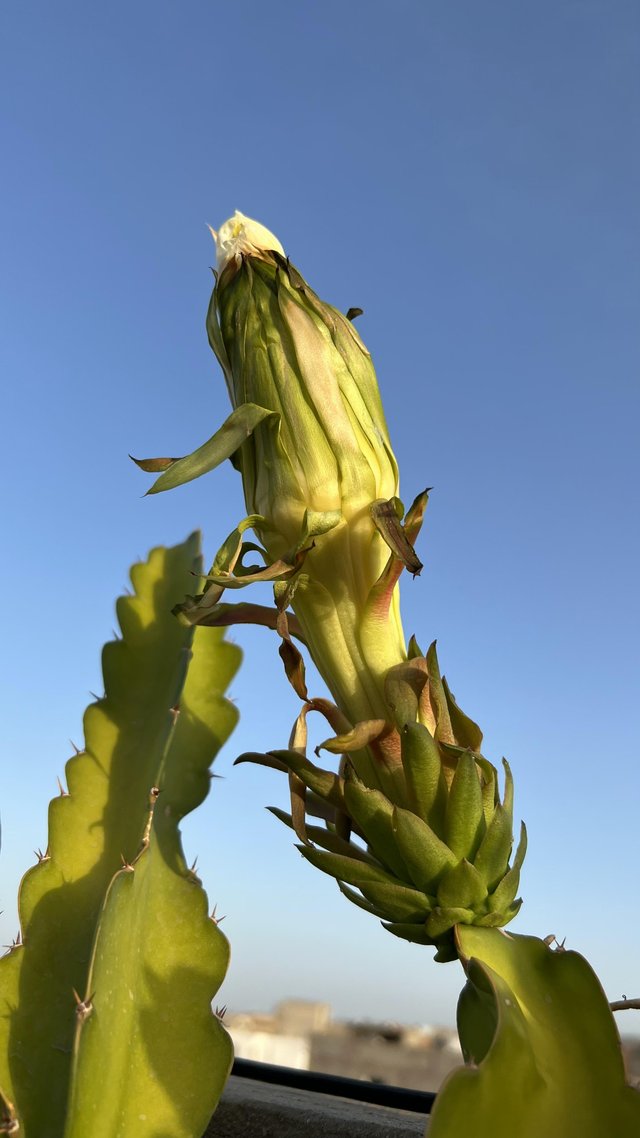 | 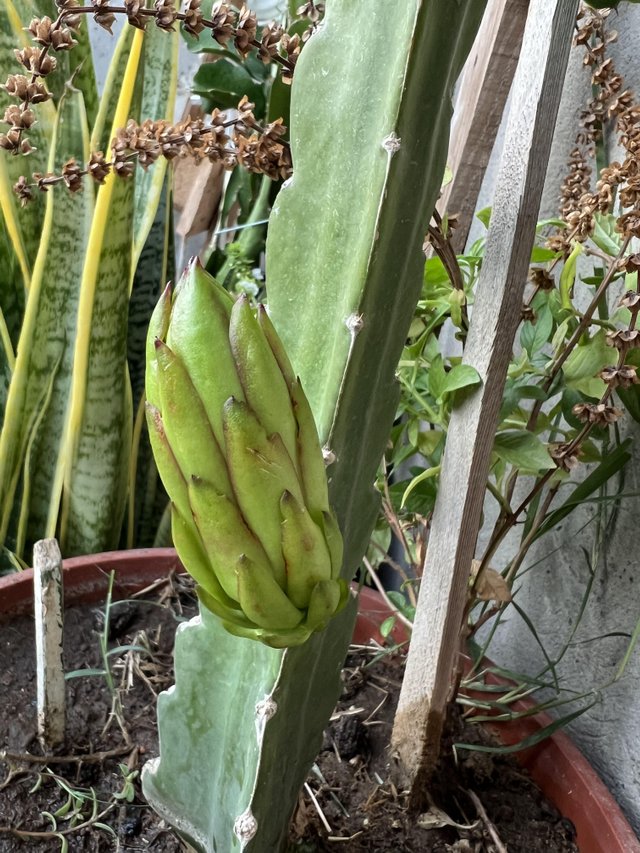 |
|---|
Day by day, then week by week, the plump floral buttons lengthen and sheath themselves, and the plant, if protected from capricious watering and granted good air circulation, readies its one-night show behind closed petals, so you will want to refrain from wet leaves at night and instead provide steady moisture in the root zone and a slight lean toward potassium and calcium, because these elements along with steady warmth dictate the size and stamina of the bloom and, downstream, the quality of the fruit, transforming a potentially delicate promise into a robust start.
| Opening of the Flower: |
|---|
The dragon fruit flower is known for its stunning beauty. They are nocturnal, so they are often known as the “Queen of the Night.” Their big, white flowers are fragrant, but only last for a single night, so this phase is both mystical and ephemeral.
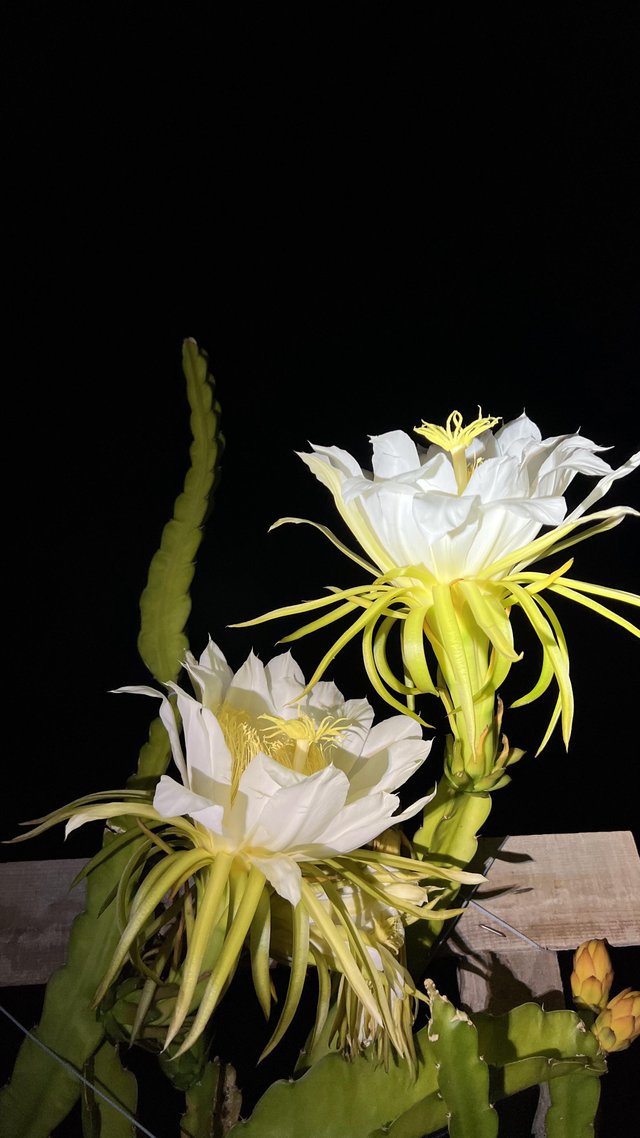 | 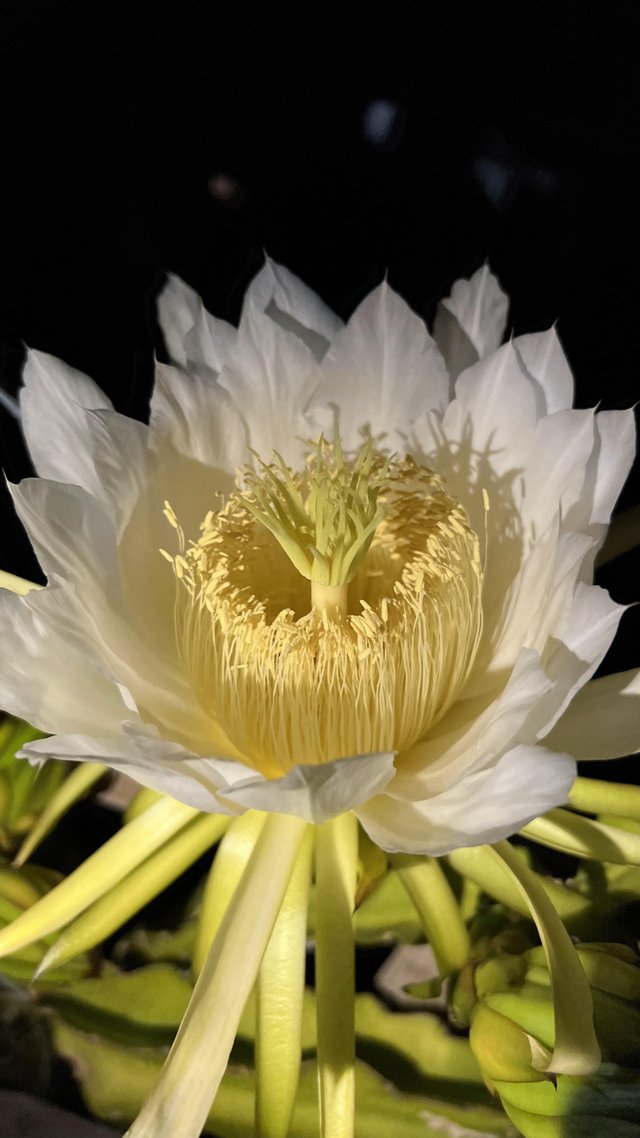 | 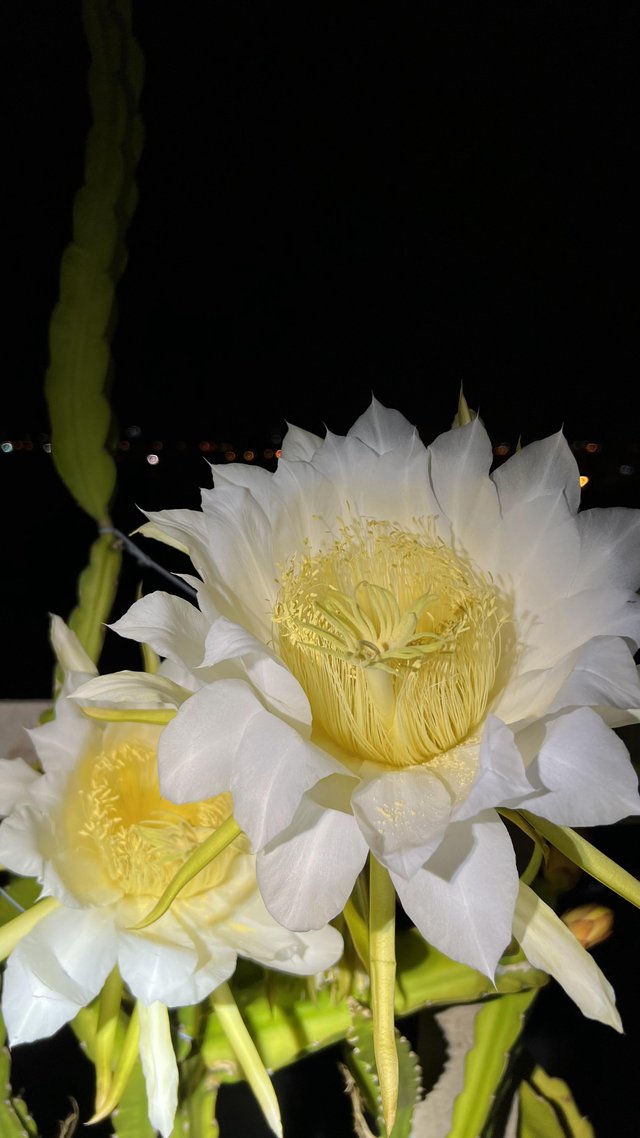 |
|---|
As the evening darkens, the cactus opens white, perfumed trumpets that can spread across your palm and beyond, and because their season is so short , as little as from dusk until the small hours, you will want to have a headlamp, a clean soft brush or cotton swab, and a small vessel, while also marking the exact date of the anthesis, because the date stamp is the only way to know when the fruit will be physiologically mature enough to break away full of flavor rather than just full of color.
| Hand Pollination: |
|---|
Because dragon fruit flowers open in the night, many of the common pollinating insects like bees are not around. Hand pollination is often necessary for fruit set. Manual pollination by gardeners is helpful, transferring pollen from one flower to another, which improves the chances of fruit set.
 | 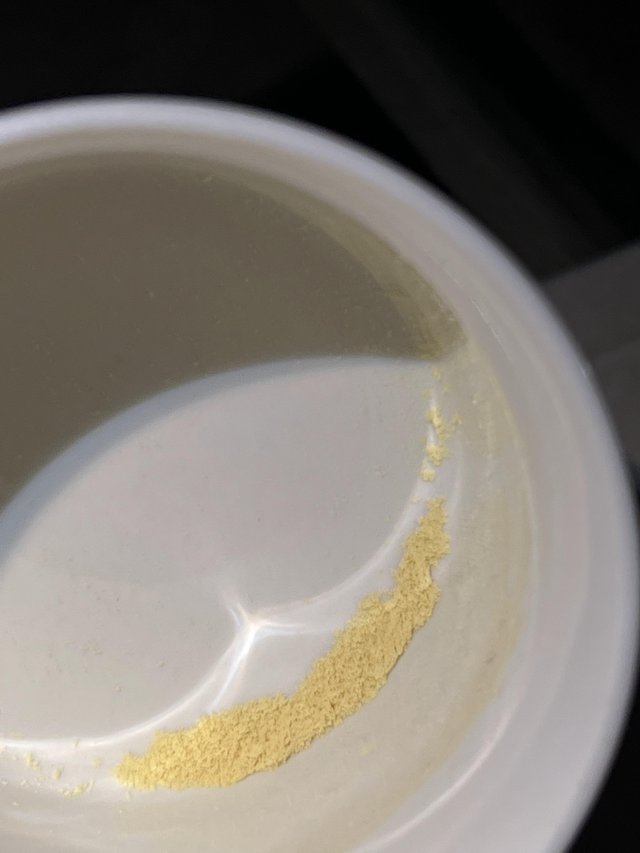 | 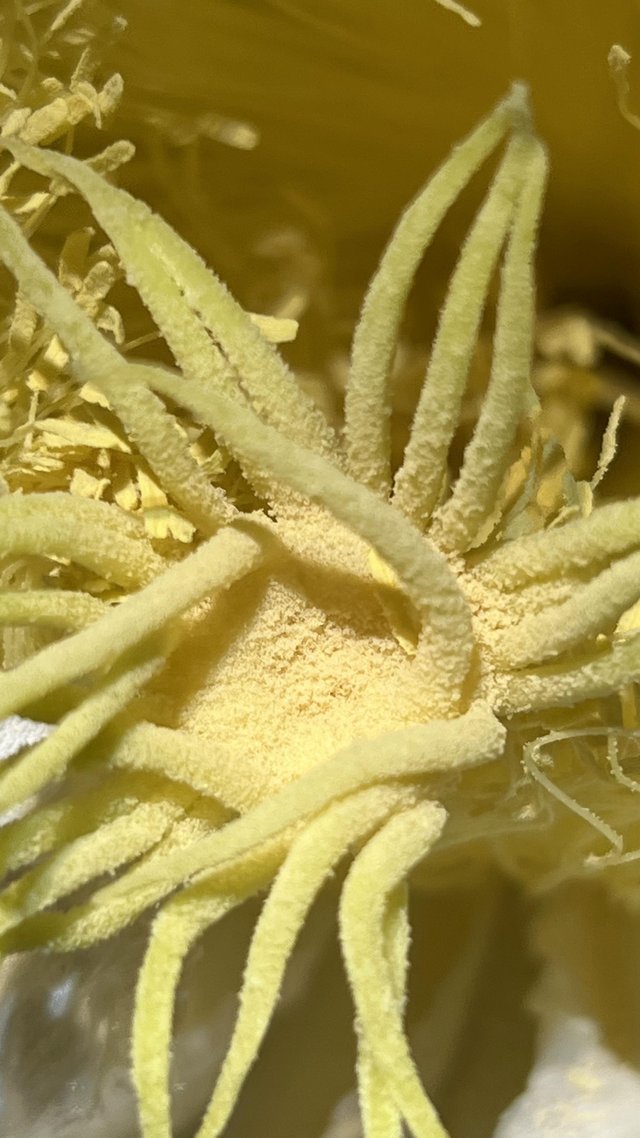 |
|---|
Though moths and bats sometimes oblige, many gardens have no pollinators of the night, and some cultivars have poor self-fertility, so the surest route to a consistent fruit set is collecting fresh, powdery pollen from the anthers of a newly opened flower and, that same evening, touching it to the receptive, glistening stigma of another flower, preferably of a different clone for stronger set and larger fruit, a process that feels delicate but quickly becomes meditative as you move from flower to flower between 9 p.m. and 2 a.m., when both pollen viability and stigma receptivity typically align, after which you can rest assured that invisible work of cell division and fruit initiation has already begun.
| Fruit: |
|---|
When the flower is fertilized, the process of metamorphosis begins and the fruit forms. The petals will fade away and the ovary turns into the dragon fruit. In the next weeks, the fruit increases in size and undergoes transformations of shape and color.
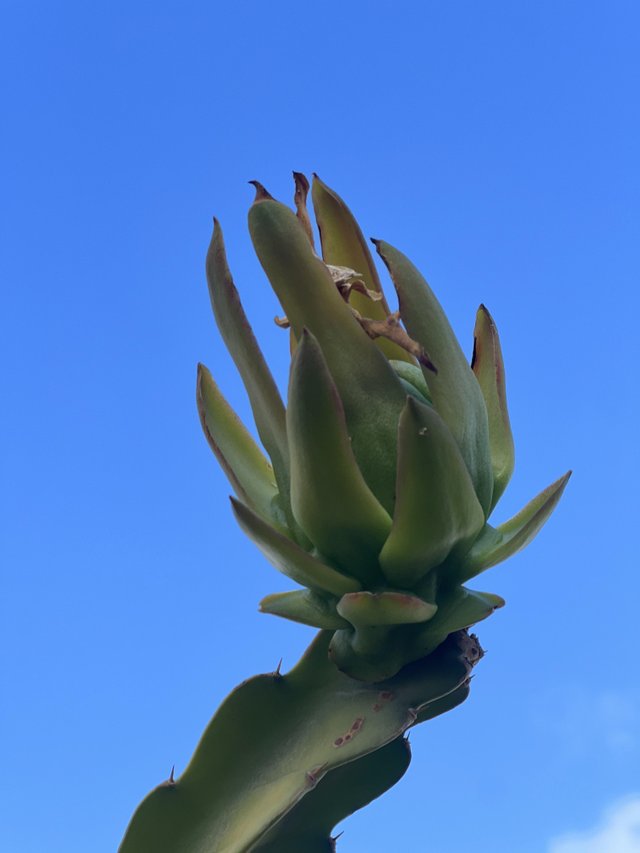 | 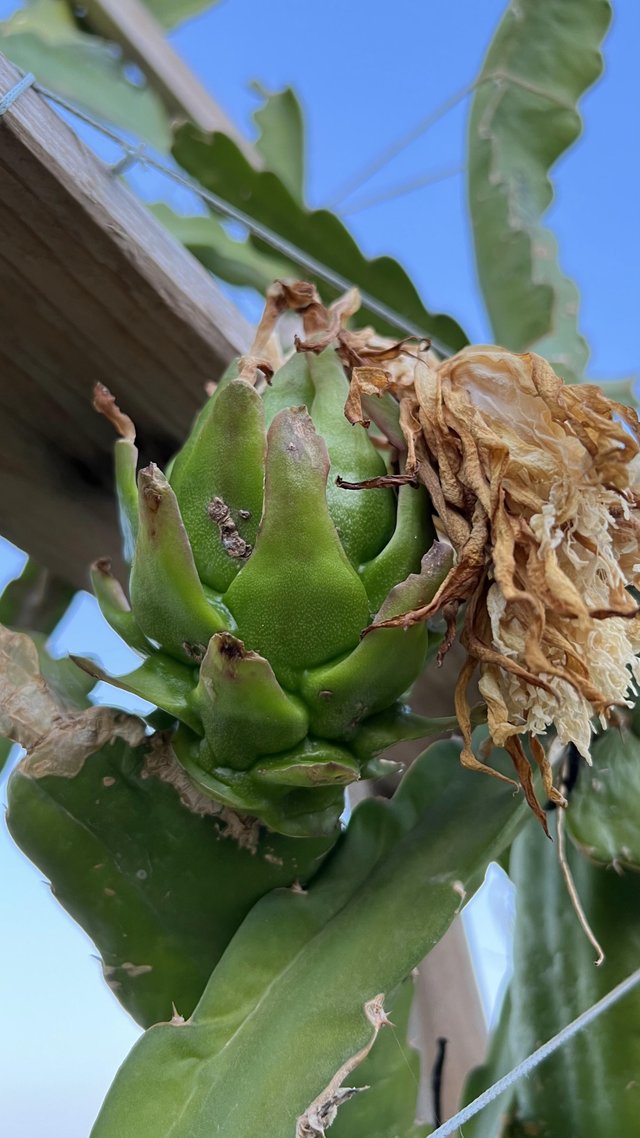 | 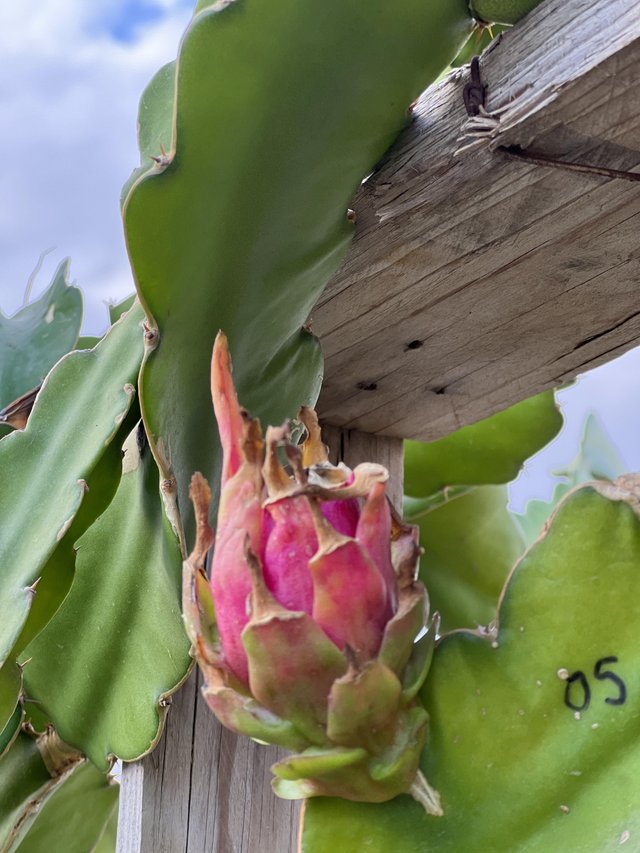 |
|---|
Over the weeks ahead, the shriveled corolla falls and the ovary swells into a green, scale-tipped orb or ellipse, and the job at hand becomes consistency rather than excess, for steady soil moisture without puddling, for sunlight not too much but still, in very hot places, perhaps softened by a light shade cloth at midday, for nutrition that gently favors potassium over nitrogen, allowing the fruit to expand without splitting, allowing sugars to accumulate without dilution, allowing the peel to stay smooth and resilient against sunburn or insect probing, all the while the color quietly moves in from green toward the saturated pink, red, or yellow that signals ripeness for the variety you grow.
| Reaping and Eating: |
|---|
Hot Sexy Pink When dragon fruit is fully grown, its skin color changes which it can switch from green to luscious pink, red, or yellow depending on the variety. This color transformation is the primary indicator that the fruit is ripe to pick. After gentle harvesting, the fruits are washed and ready to eat. Sugar sweet, ultra creamy, and loaded with nutrients, dragon fruit is now prepared to eat fresh or make something delicious with it.*
 | 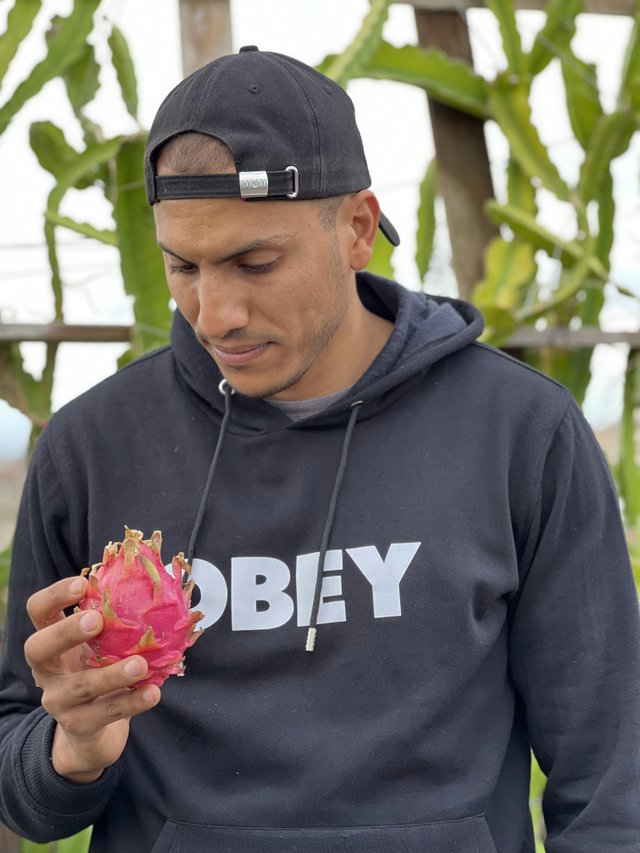 | 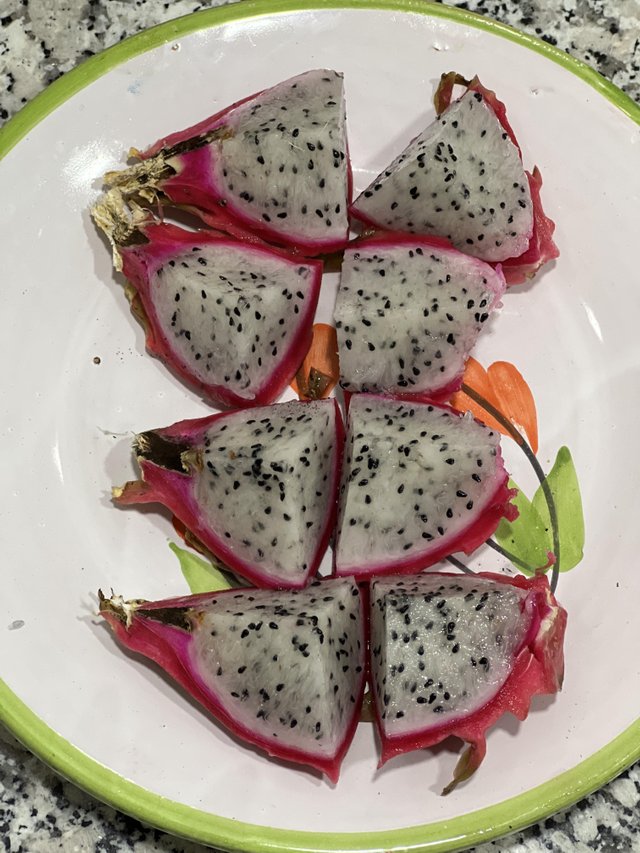 |
|---|
Harvest comes not as one but as a confluence of cues, as the peel attains a completely uniform shade for that variety, the bracts remain mostly firm even though they may blush or pall a little at their very tips, the fruit gives slightly under a gentle press without collapsing, and, if available, a handheld refractometer reads 15° Brix or more, meaning in practice that now is the time to cut the fruit in the cool of the morning with a clean pair of pruners, leaving a short stem to minimize wounding, after which a brief rinse, a patient try in the shade, and sequester in a cool, damp place, often 45–50°F / 7–10°C with good circulating air, will sustain quality for a couple of weeks as counted from maturity, whereas room temperature service is best considered the next few days, when the fruit’s aroma and texture peak on the counter and facilitate effortless fresh wedges, cold smoothies, or vivid salads.
While an attentive routine helps your chances, it doesn’t hurt to think ergonomically through your own workflow the plant’s, too, because shaping your trellis so the flowers present at a comfortable eye-to-chest level reduces the chances of an awkward reach on a late-night pollination pass, and setting a dedicated caddy there with your brush, labels, and a small notebook (to record bloom dates, which tell you when to expect your harvest to peak), or training four to six main leaders per post and letting them umbrella over the cap means the blooms you need to oversee are teardrops down a curtain, not hidden from view in a tangle, or planting by cultivar lets you cross-pollinate in orderly fashion, so you’re not pacing back and forth in the dead of the night all of which makes for friendlier, neater treks and a higher probability of a good set and uniformity across a whole bed.
My Youtube Video
Best Regards,
@marwene

Curated by: @ alexanderpeace
Endeavor to engage with other users and leave meaningful comments on their posts at least 50 words. In that way you add value to the ecosystem and also build good relationships. Also upvote others users to ensure that your voting CSI is >5. You can also powerup some of your steem in that way you will build your steem power and influence faster as you steem on. You can only use the burnsteem tag if you set 25% beneficiary to @null. You did 5%.
Thank you so much@booming01 for pointing that out. I really appreciate the guidance because I’m still learning the right practices here.
I’ll make sure to engage more with others and leave meaningful comments, not just short replies. Also, I understand now about the CSI and the importance of powering up to grow influence.
Thanks again for the helpful advice.